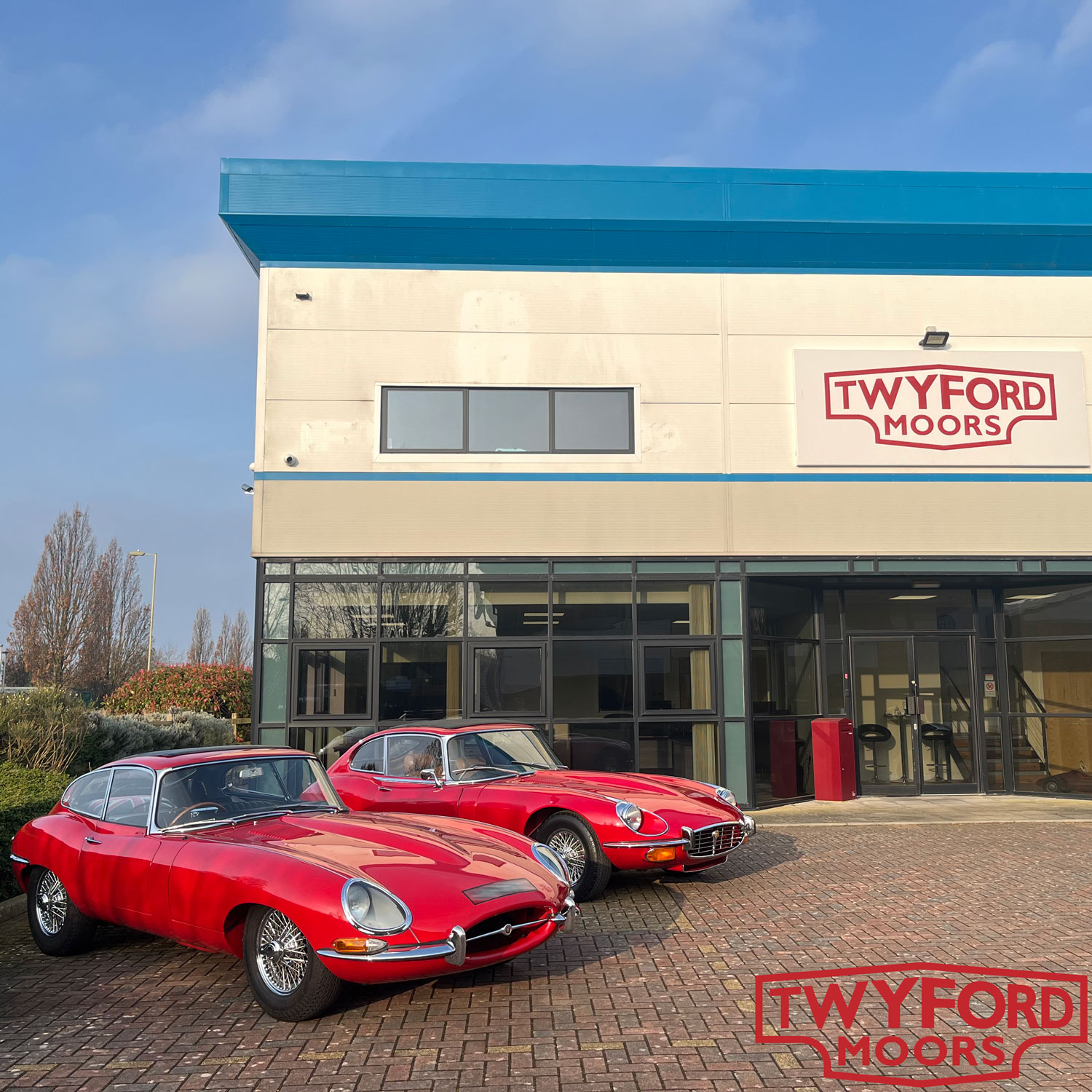A diverse collection of classic Jaguars – workshop update
We felt this photo of the workshop really was worth sharing. It demonstrates in one shot not only how busy we are, but also how diverse the cars currently in our workshop are whilst still all being Jaguars. Short of a museum you are unlikely to see a collection of Jaguars to rival this.
In the foreground is an XK120 currently undergoing full nut an bolt restoration. Next to that is a MK5, an XK140 drophead coupe undergoing a full restoration and at the end of the row is a MKII saloon. Behind the XK120 there are a pair of C-Type replicas, one by Realm and one by Proteus. To the right of the C-Types you can just make out the rear end of an XK150 with an XK120 OTS and then another MK2 saloon on the ramps behind it. To the left of the photo, there is a 4.2 Series 1 E-Type up on one of our lifts and at the very back there is an SS100. What a collection eh!?
In this update we look at everything from XKs to E-Types to MKII saloons. If you are into your Classic Jaguars please read on!
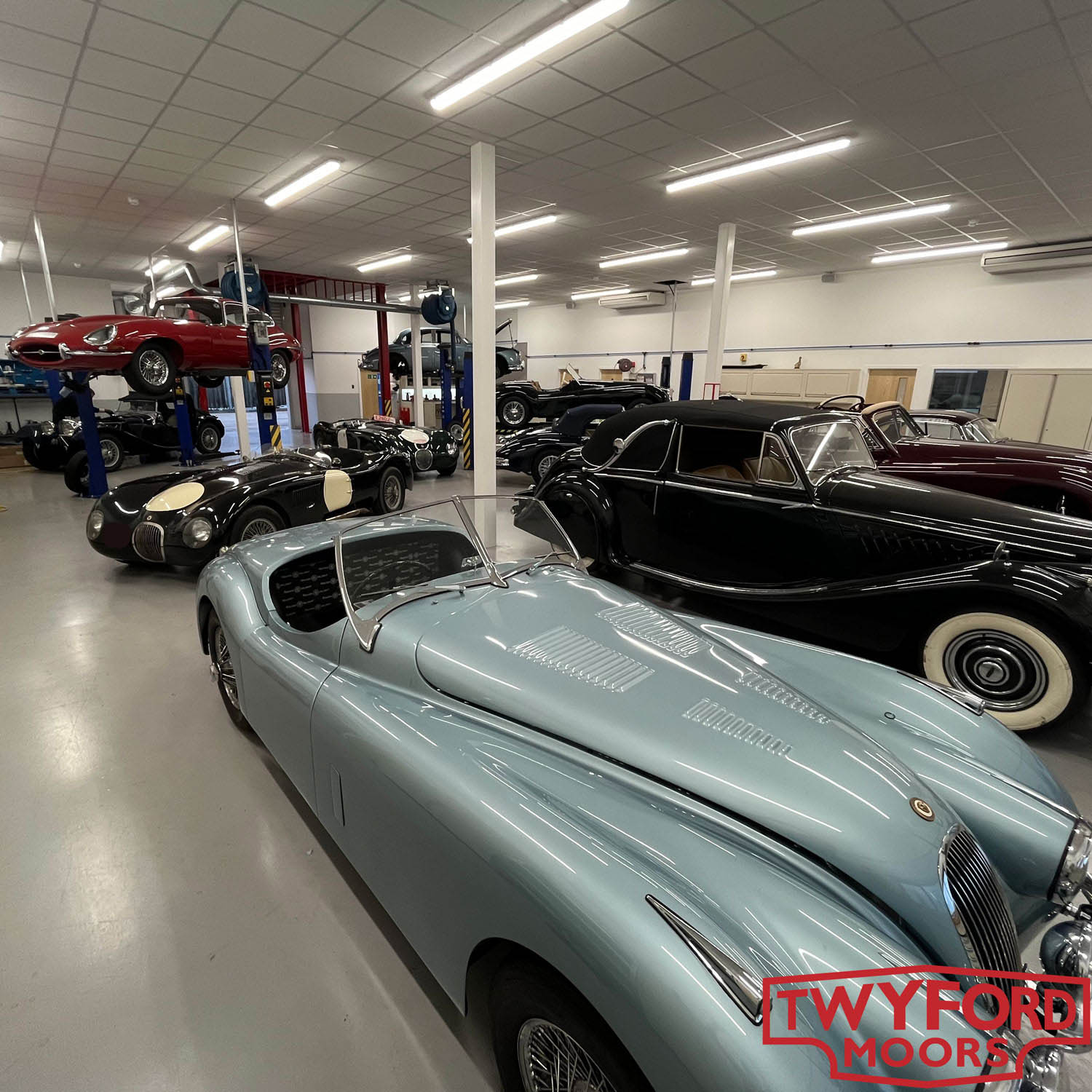
Jaguar XK150 wiper upgrade and new fuel tank
This lovely Jaguar XK150 fixedhead coupe was restored elsewhere some years ago and overall is in stunning condition. The owner had been experiencing some running issues which other specialists had tried and failed to resolve. We arranged for the car to be transported down for his home in Scotland to our workshop for us to investigate the fault as well as carry out a full service.
On inspecting the car we found that when the car was restored the original fuel tank was reused. Although it looked to be in good condition on the outside, internally it was very corroded. The rust from the fuel tank was being pumped through the fuel lines and causing restrictions and blockages in the fuel system. Without an adequate supply of fuel, the car is unable to run properly. We have now removed the old fuel tank and fitted a new aluminium fuel tank.
The owner also asked us to fit our upgraded windscreen wiper system to the car. This is an excellent upgrade for an XK giving stronger and more reliable windscreen wipers as well as a wider sweep; something that is likely to be worthwhile for a car living in Scotland!
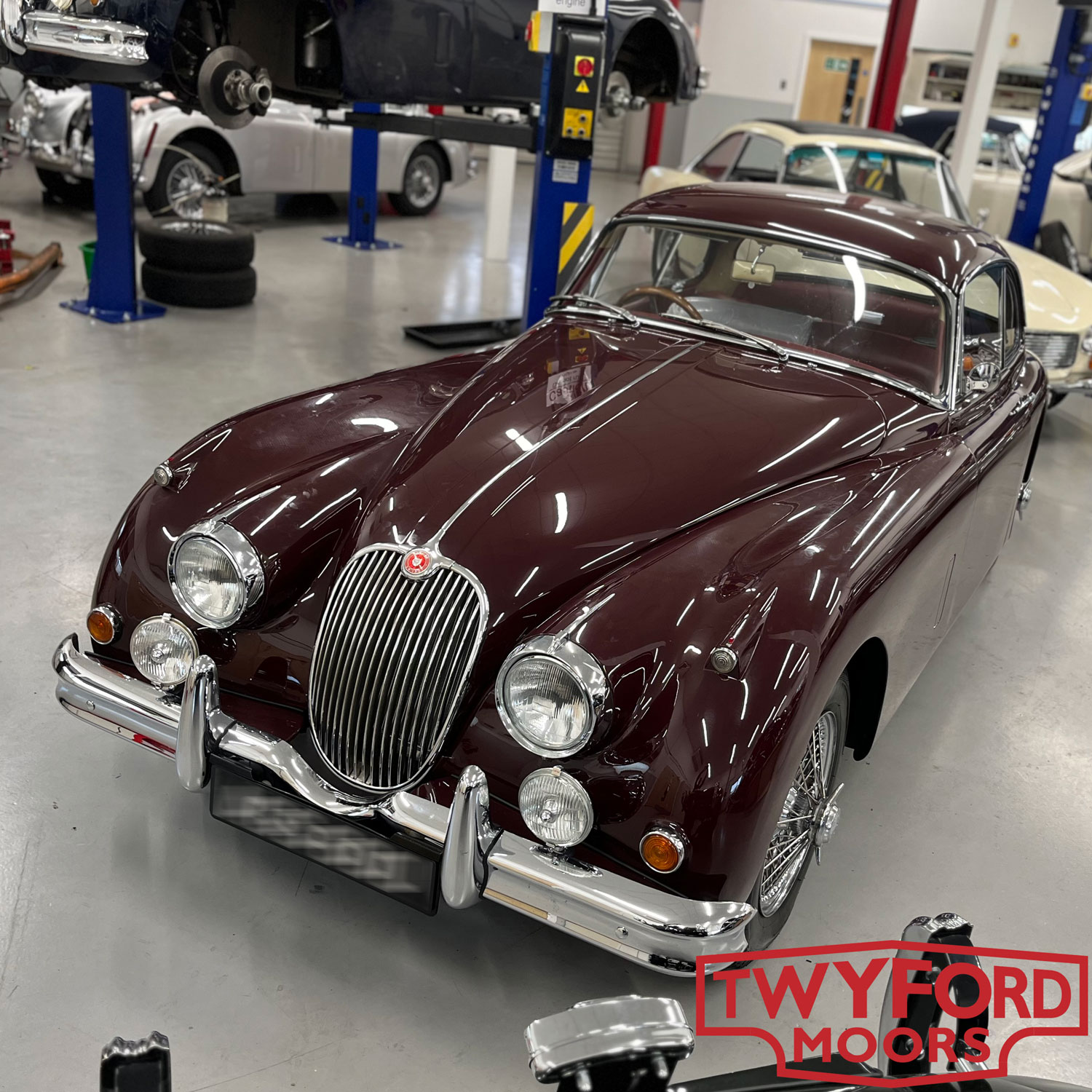
Jaguar C-Type Replicas
We had the opportunity to get this photo of two Jaguar C-Type replicas side by side. Although they are both recreations of the same car they were built several decades apart and are in fact very different creatures. The car in the foreground was built by Realm. It has a fibreglass body and independent rear suspension. In the background is a car built by Jim Marland when he was founding Proteus. The car was used as the first Proteus catalogue car. It features an all-aluminium body and a live rear axle bringing it more closely in line with the original cars.
It is interesting to be able to place the two cars side by side and compare them. In some ways, the Realm is a more accurate recreation with the benefit of several extra decades of research going into the body shape. The rear end of the Realm certainly looks closer to the originals. In other aspects, the Proteus car shows its pedigree. Certainly when it comes down to the details the Proteus is the more accurate car with a nicer grille and a more accurate interior.
What is certain is that both cars are fabulous to drive and offer great value for money. These are usable evocations of the real Jaguar XK120C and not intended to be ‘tool room copies’. They may not be for the purist but for those who want a flavour of Jaguar's 1950s motorsport heyday, they are hard to beat.
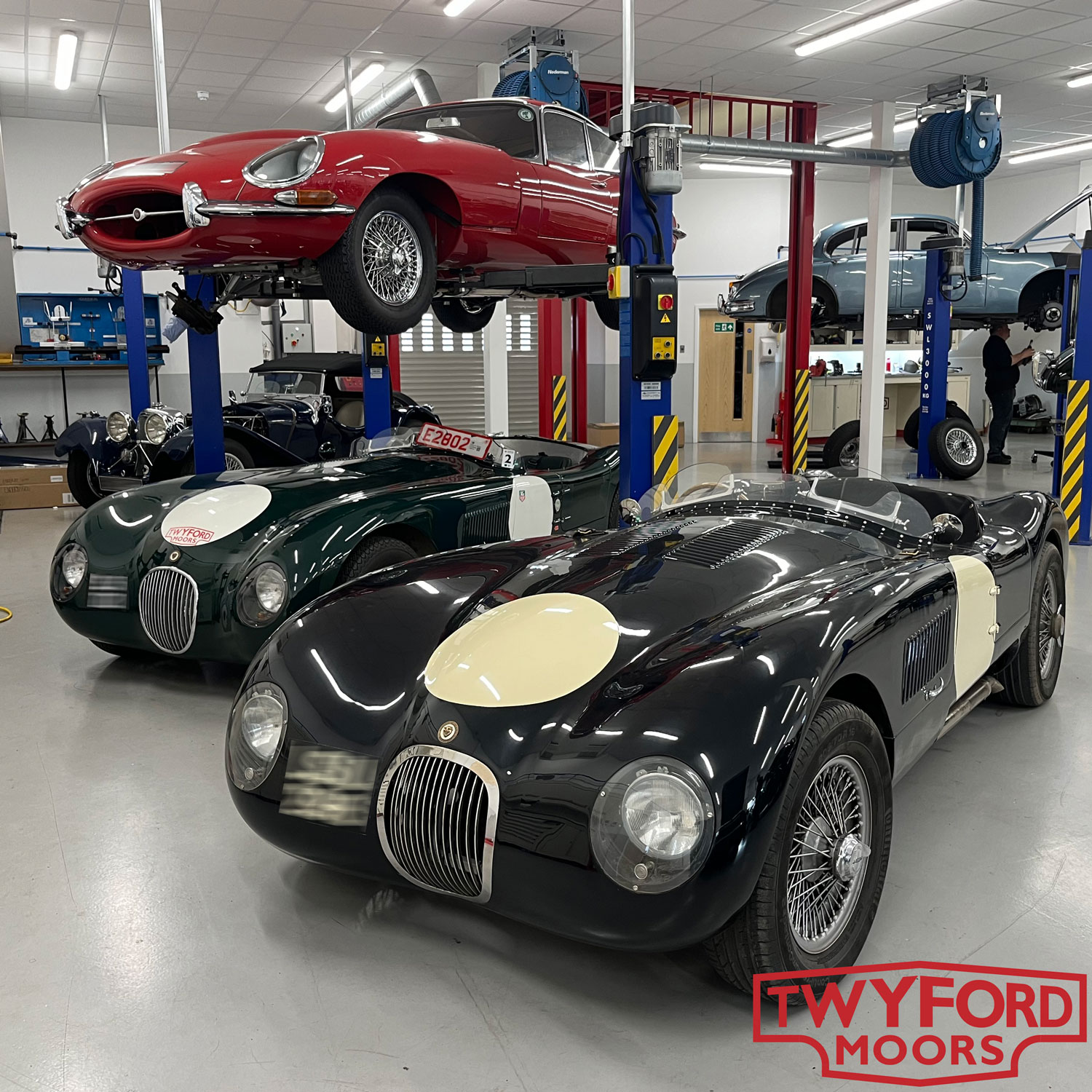
Gordon-Keeble
Those of you who have followed up for some time might recognise this rather unusual car. It is a Gordon-Keeble that we have cared for, for some years now. It is back with us for its annual service and by all accounts has provided reliable motoring over the past 12 months with no issues to report.
These are exceptionally rare cars so it is an honour to be trusted with them. Gordon-Keeble was founded by John Gordon, formerly of Peerless, and Jim Keeble in 1959. The car is based on a square-tube steel spaceframe chassis with independent front suspension, all-round disc brakes and a Chevrolet V8 engine. The prototype body was designed by Giorgetto Giugiaro and built by Bertone in Italy however when the car went into production the body was changed from steel to glass fibre and produced in the UK. Only about 90 cars were produced between 1964 and 1967 in which time production was moved from Slough, to Eastleigh and then finally Southampton.
The marque is notable for having a tortoise on its badge. This is reputed to be because, during a photo shoot for the cars, a pet tortoise walked into the shot. It was felt that the irony of a slow tortoise made it an appropriate bonnet emblem.
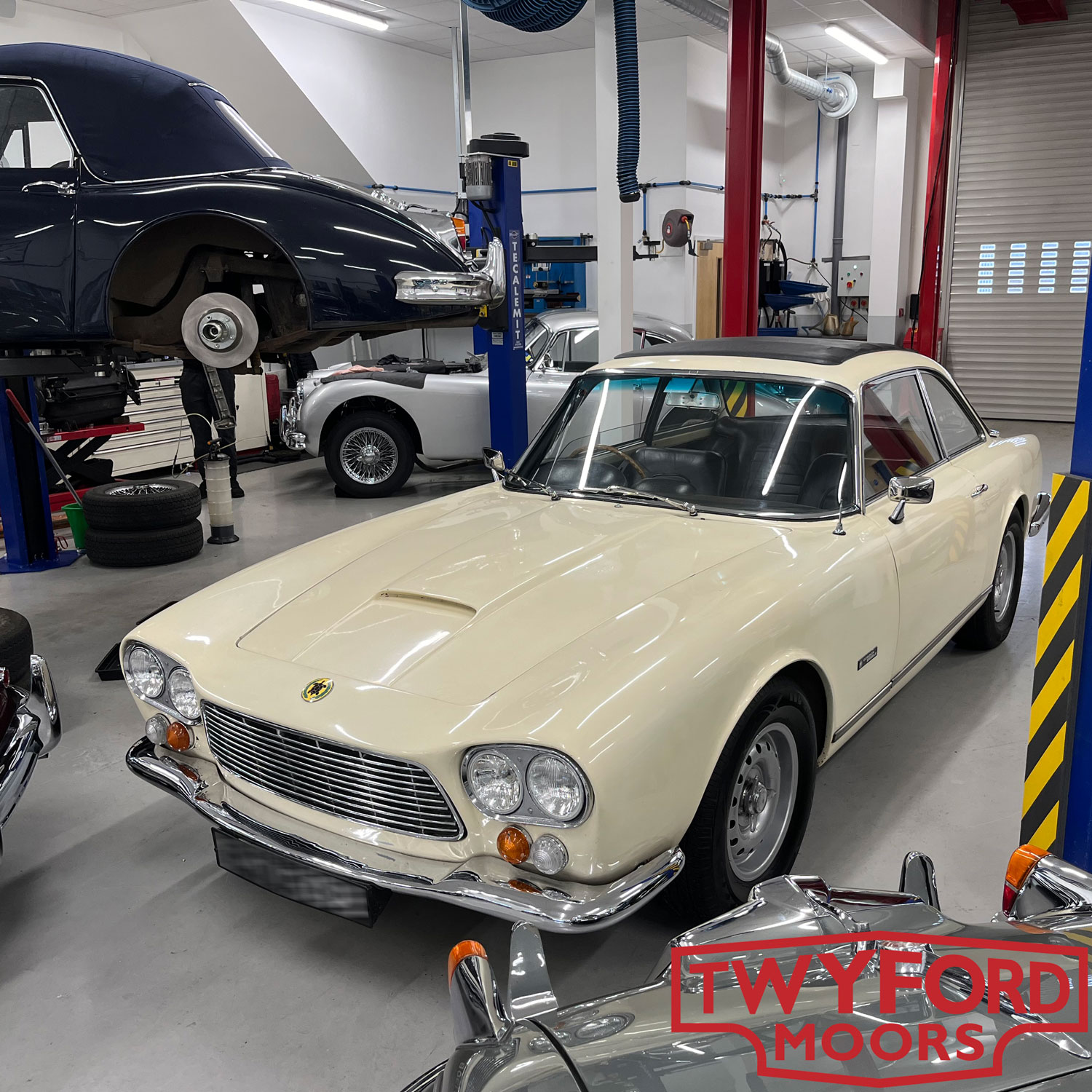
SS100 Head Gasket Replacement
Pictured here is the cylinder head of an SS100 having just been refitted to the car. Before World War 2 Jaguars were known as SS and their flagship sportscar was the SS100. The SS100 was in fact officially called the SS Jaguar 100 and at the time the Jaguar name was intended to be used to mark SS high-performance vehicles. The SS100s performed very well in motorsport events before the war and were the first vehicles to sport the now iconic Jaguar Leaping Cat bonnet mascot. After the War, SS was dropped in favour of Jaguar.
The engine in the SS100 was derived from a Standard straight-six pushrod engine. SS developed their own overhead valve cylinder head which allowed the engine to produce far more power than in its original form. The engine was available in 2 ½ litre and 3 ½ litre versions.
This SS100 was brought to us with a suspected head gasket fault. Once we investigated and tested the car we confirmed that it was indeed a head gasket issue so the head was removed, stripped and skimmed. The hardest part of the job was obtaining the new head gasket which we had specially made for the car. We look after quite a number of these pre-war SS cars so if you need a specialist who knows their way around these legendary cars please do get in touch.
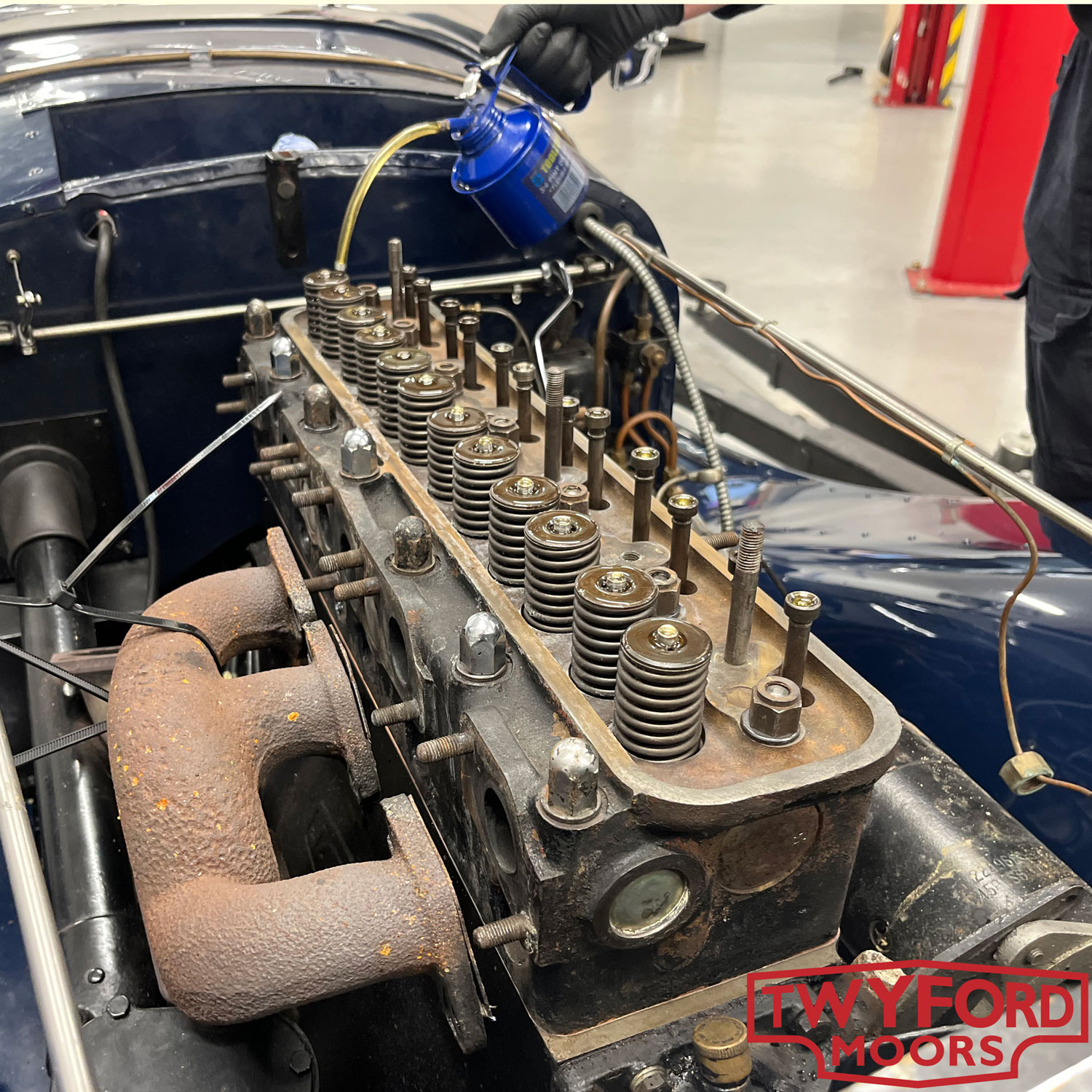
Jaguar E-Type paintwork
We often extol the virtues of E-Type fixedhead coupes. They are beautiful and practical cars. A 4.2 litre Series 1 car like this makes a very usable, reliable and enjoyable classic. The torquey 4.2-litre engine and the all-synchro gearbox are a great combination making the car very easy to live with. The ride and handling of a well-maintained and set-up E-Type are hard to beat. Most of all the head-turning and iconic styling of the E-Type seems to appeal to all generations. You are guaranteed to draw admiring looks and put smiles on faces everywhere you go in an E-Type.
This lovely car is with us for some paintwork. The car has had various areas resprayed at some point in the car's life and the paint is not quite a perfect match. You have to study the car quite closely to notice this but the owner wants the car to be spot on. As shown here we are carefully removing the exterior chrome work from the car which will be stored safely whilst the car is resprayed. All the chrome is in good condition so it will simply be cleaned and polished before being refitted.
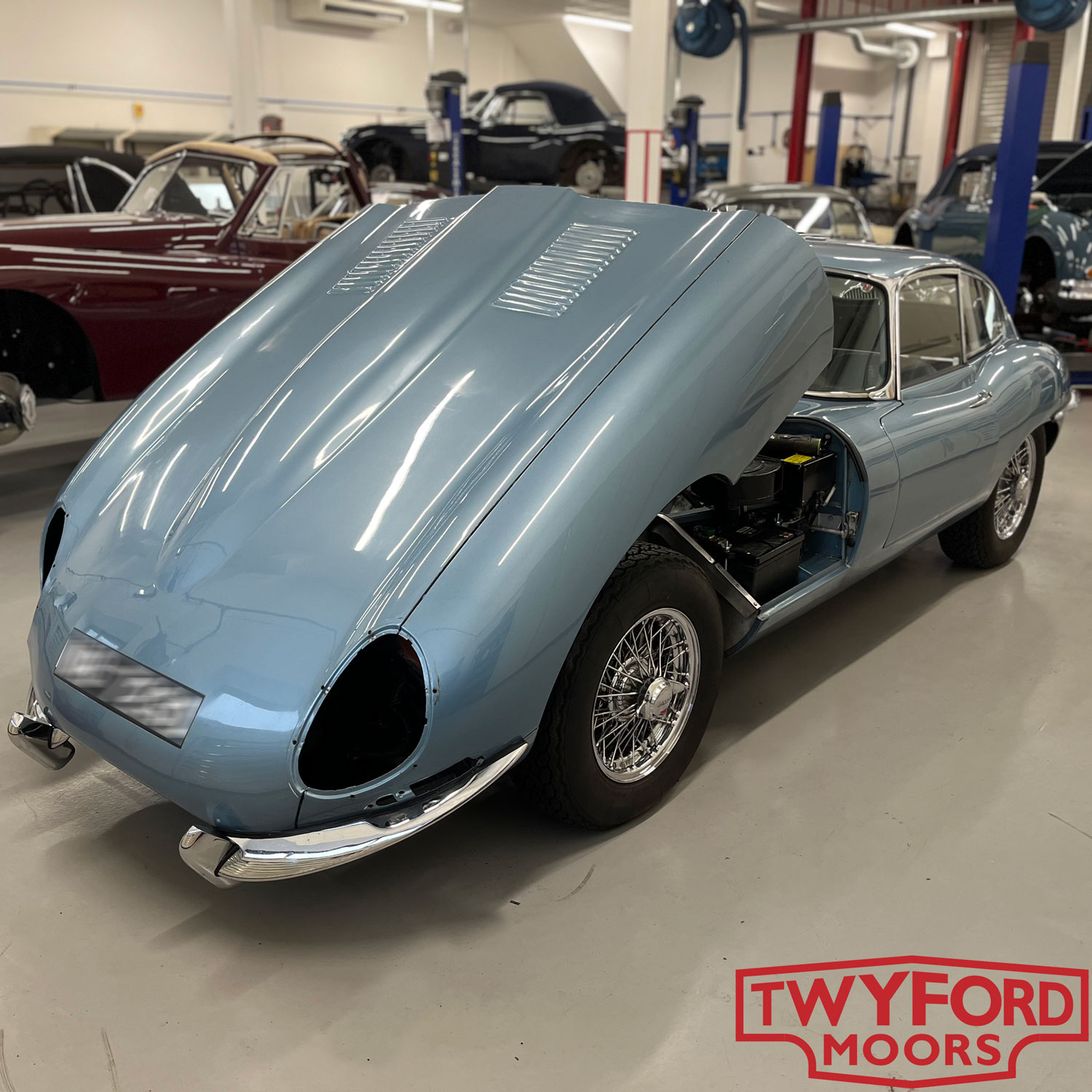
Jaguar XK150 clutch replacement
Pictured here is the engine removed from the Jaguar XK150 3.8 S which can be seen in the background. This is a beautifully original car which spent most of its life in Australia before being shipped back to the UK in the last 10 years. A lot of labour time goes into changing the clutch on an XK with an overdrive gearbox such as this car. That is because to change the clutch you have to remove the engine and gearbox as one unit and then separate them once out of the car. Some will say that you can get the gearbox out through the car, which is true of non-overdrive, but is only possible on an overdrive car by cutting a significant amount of metal out of the car.
With the engine and gearbox safely removed from the car we are attending to a few oil leaks and giving everything a good clean up. In the foreground, you will see the new clutch and flywheel ready to be fitted. The flywheel is lightened and balanced with the new clutch before fitting. Once the engine and gearbox are back together all that remains is to carefully refit them to the car.
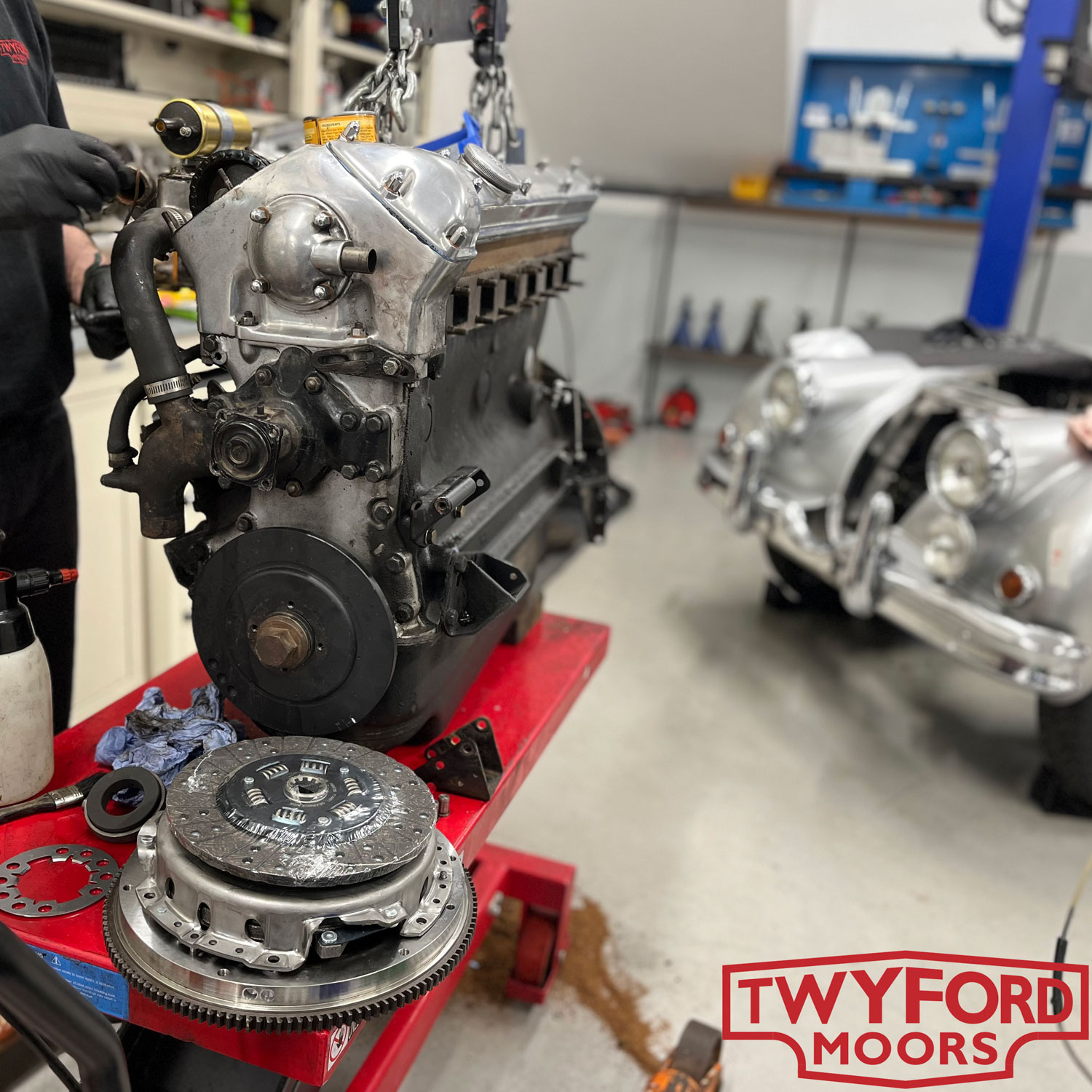
Jaguar E-Type rear subframe rebuild
Over the past few updates we have shared photos of a Jaguar E-Type subject to a full nut and bolt restoration on. With the car fully disassembled and the body away to be chemically dipped we are still able to make progress by refurbishing some of the sub-assemblies. The engine has been stripped and is in the process of being machined. As shown in our past two updates, the rear differential has been stripped and rebuilt. We now have all the components back from being powder coated and the differential has been refitted into its housing. Next, the rear subframe will be rebuilt ready to be fitted back into the car. On the bench, in the background, you can see the freshly powder-coated subframe, the half-shafts and the hubs along with other parts for the rear suspension.
We undertake all aspects of restoration work on Jaguar XK120s, XK140s, XK150s and E-Type. Be it a full nut and bolt restoration or simply a differential rebuild we are delighted to assist with projects big or small.
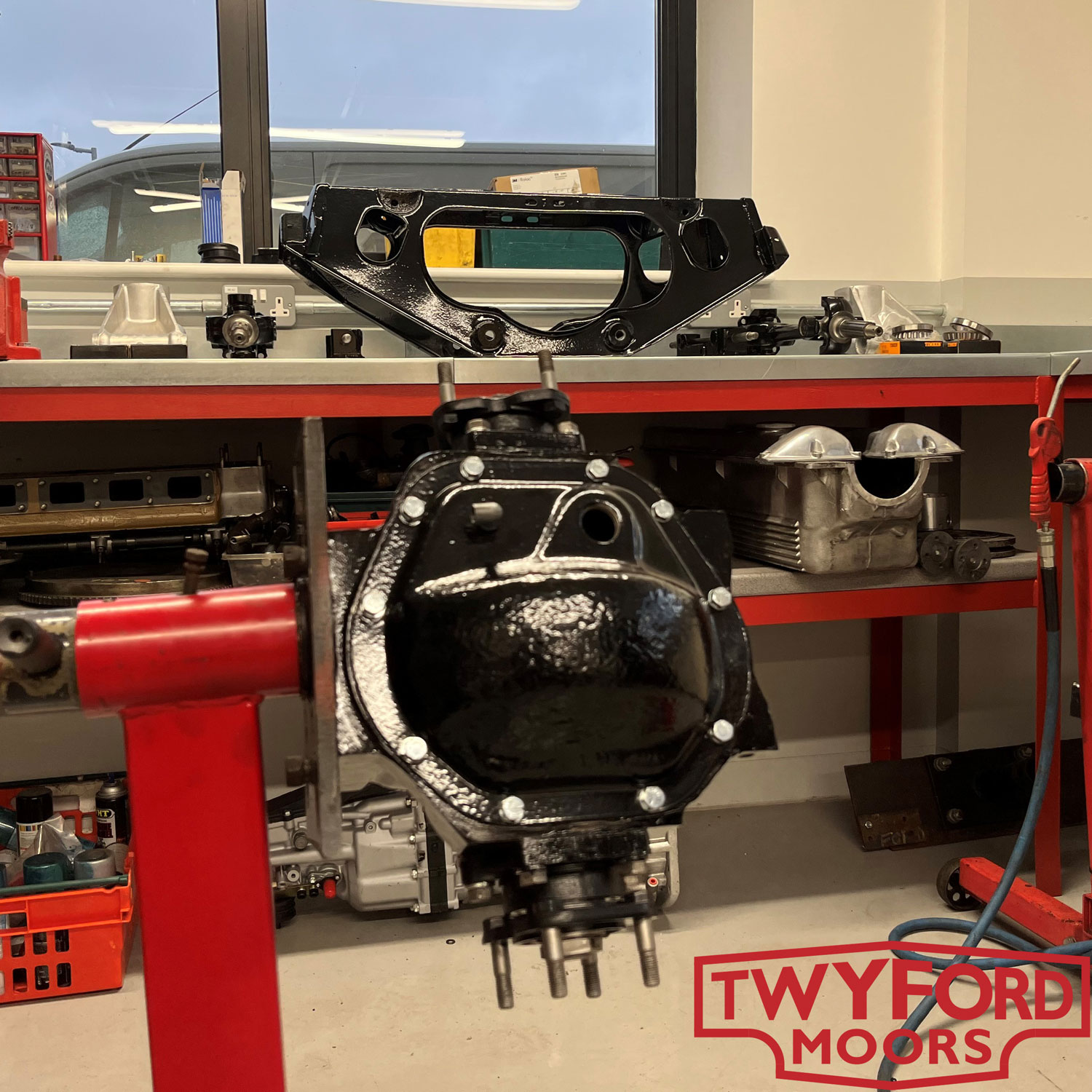
Jaguar MKII recommissioning
This MKII was brought to us by its new owner after several decades off the road. You might be surprised to hear how frequently we have cars come into us which were restored some years ago and have since been barely used. They spend years safely tucked away in a garage and although this does keep the paint and chrome from deteriorating it doesn’t do the mechanical elements of the car any good at all. Rubber components perish, fuel goes stale and tyres develop flat spots to name but a few issues. If you are storing a car for a long period please do try to start and move the car every few weeks. This can avoid damage to many components and ensure the car remains usable.
After a car has been off the road for some time it is vital that it is properly checked over and recommissioned. What starts as a perished and weeping brake seal can quickly develop into brake failure after a few miles of driving. The MKII here required extensive work to make it safe for the road again ranging from suspension bushes to master cylinders. Pictured here are the brake servo and reservoir tank. The servo had developed a leak and was allowing brake fluid into the vacuum side and thus allowing the car to suck extra air and brake fluid in through the inlet manifold.
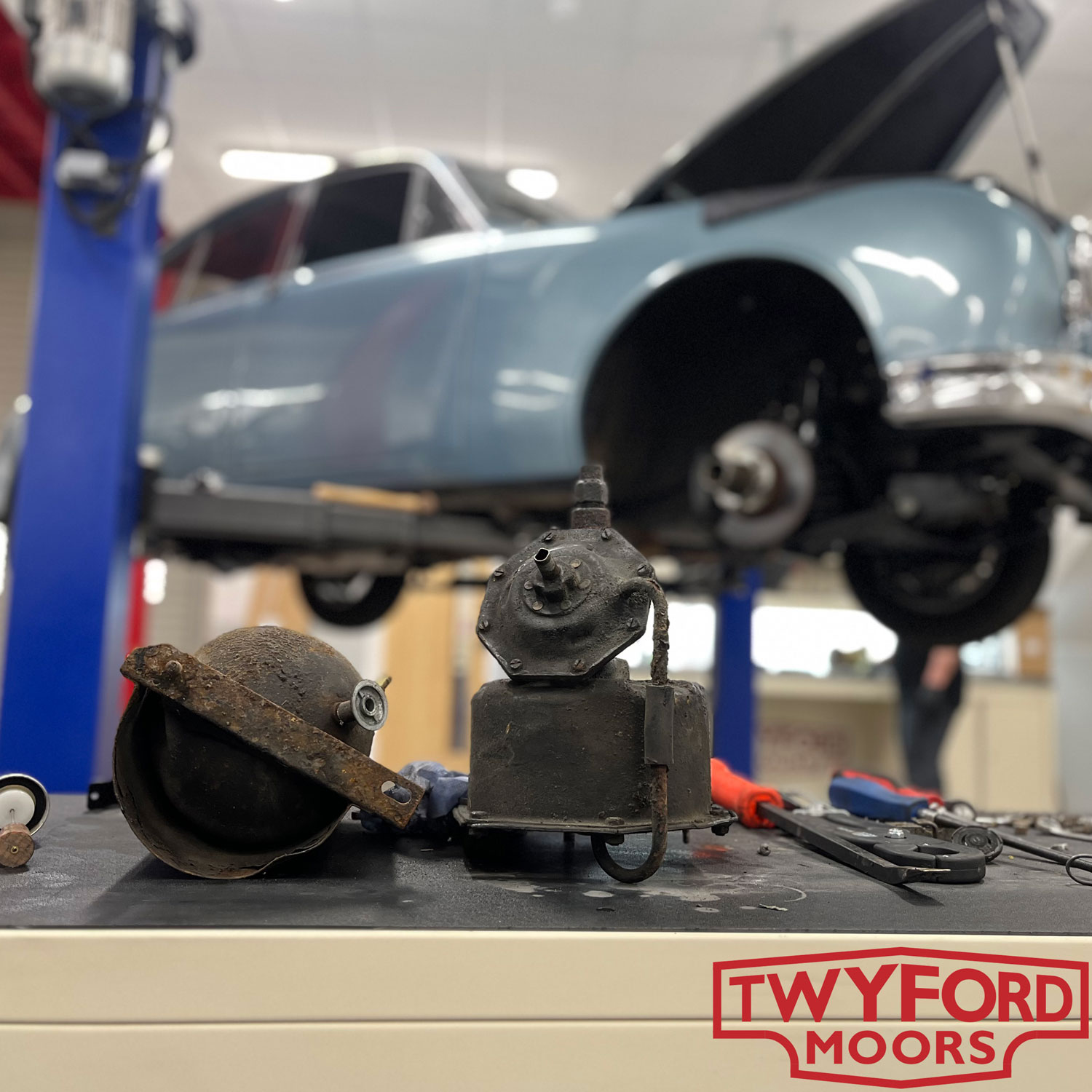
Jaguar E-Type Series 1 and Series 3
This photo shows a lovely pair of Jaguar E-Types outside our workshop awaiting collection. They share many similarities at a glance but are actually very different cars.
The car in the foreground is a 1966 Series 1 4.2 litre fixedhead coupe. The easiest way to identify it is by its enclosed headlights, the slim indicators mounted above the bumpers and the gently sloping roofline. Notably it features a 4.2 litre straight six XK engine which, although developed somewhat over the years, traces its routes back to the 3.4 litre unit fitted in the XK120.
In the background is a Series 3 E-Type 2+2. This was the iteration of the E-Type produced between 1971 and 1974. These are most easily spotted by the open headlights, indicators mounted below the bumpers, flared wheel arches, more upright windscreen and more steeply sloped rear roof line. The Series 3 is actually a bigger car than the Series 1 with significantly longer doors allowing taller drivers to get in and out far more easily. The biggest change was the 5.3 litre V12 engine. The whole character of S3 E-Type is very different to that of the S1. It is more a grand tourer than a sports car.
